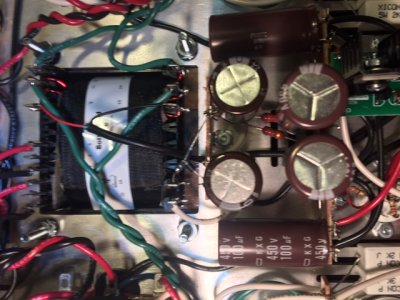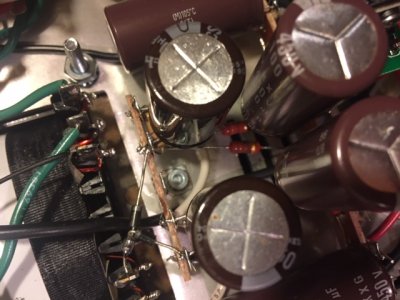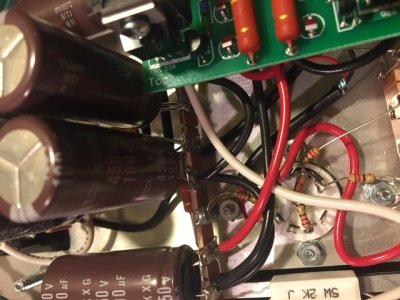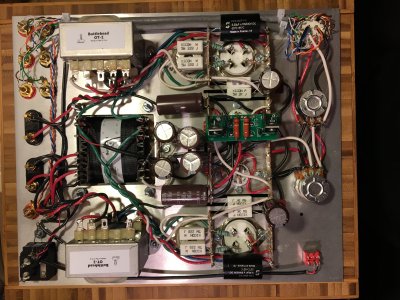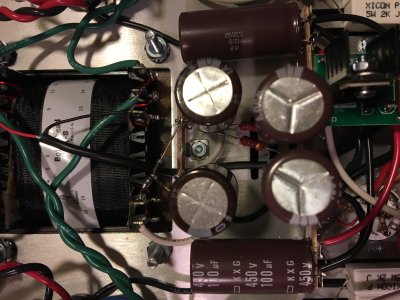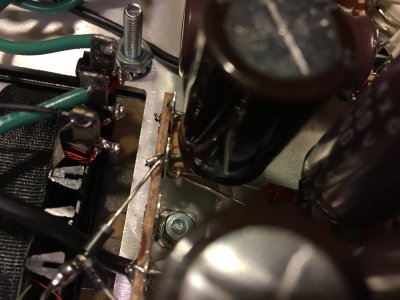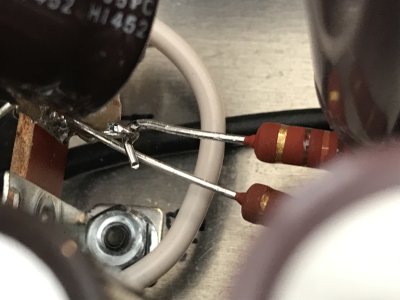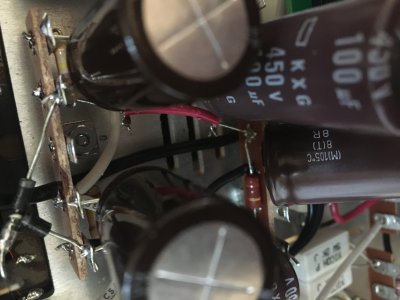WK3K
New member
Completed a new build and resistance checks. Resistance between 8U and 8U was 1.4ohm by my (cheap) meter, so I used this as my "0" value. All resistance values were within normal limits.
Moved on to check voltage and upon plug-in the resistor between 44L and 30L sparked and smoked. I immediately pulled the plug.
I just re-ran the resistance checks, and everything checks out with the exception of 26, 28, and 29 which are now measuring around 2.3-2.6 ohm (after the resistor blew). These were all WNL last night.
I've taken a look at the solder joints throughout the high voltage supply (and everywhere really) and don't see any glaring issues.
The only other thing I can think of is that I initially installed the MJE5731A's backward and had to pull them and reinstall. They seemed fine, but may have been damaged in the process?
Never had a snag like this during a build, so any advice on where to start trouble shooting appreciated.
Thanks!
Moved on to check voltage and upon plug-in the resistor between 44L and 30L sparked and smoked. I immediately pulled the plug.
I just re-ran the resistance checks, and everything checks out with the exception of 26, 28, and 29 which are now measuring around 2.3-2.6 ohm (after the resistor blew). These were all WNL last night.
I've taken a look at the solder joints throughout the high voltage supply (and everywhere really) and don't see any glaring issues.
The only other thing I can think of is that I initially installed the MJE5731A's backward and had to pull them and reinstall. They seemed fine, but may have been damaged in the process?
Never had a snag like this during a build, so any advice on where to start trouble shooting appreciated.
Thanks!


